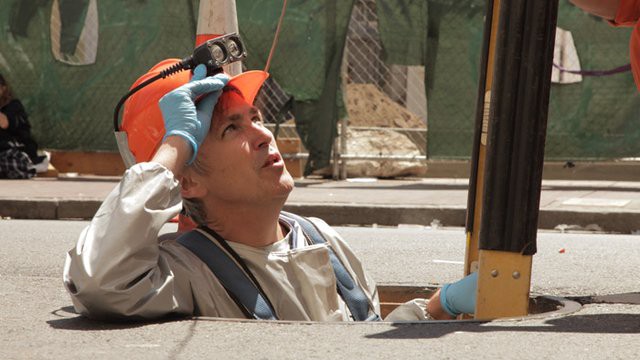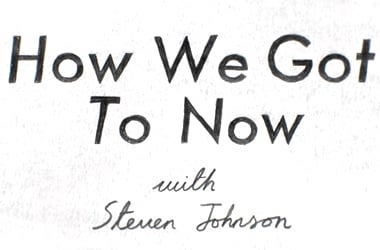

The first episode of How We Got To Now focuses on the idea of clean. We asked Steven Johnson for some behind-the-scenes stories.
What was the most surprising idea you discovered in making this episode?
At the very end we visited the “clean room” at the Texas Instruments plant outside of Austin where they make microchips. It’s an extraordinary space, one of the cleanest environments on the planet. (You have to dress up in a kind of spacesuit to enter it–to protect the environment from all the dirt on you!) But what I hadn’t realized is that they use an incredibly pure form of water as a solvent for the microchips; it’s water so clean that it’s actually not safe to drink, because they’ve stripped it of all the minerals that are in normal drinking water. So in a strange way, our microprocessors are dependent on clean water, just as we are as human beings.
Many of the ideas you discuss developed a long time before they had their biggest impact. What was the biggest “slow hunch” in this episode?
Before I wrote my book, The Ghost Map, about John Snow discovering that cholera was in the drinking water not the air (a story we tell in the clean episode) I’d always heard it told as a kind of eureka moment story: Snow makes a map that points to a contaminated well as the source of the outbreak, and from that insight he realizes that the water is the culprit. But actually Snow had been working on the waterborne theory for almost six years before he made the map of the Soho outbreak. It was a slow hunch, not a lightbulb moment.
What was the most incredible moment in filming this week’s episode?
If by “incredible” you mean “incredibly awful” I would have to say descending into the sewers of San Francisco, which was really one of the most disturbing things I’ve ever done in my life. And now I have had to relive it dozens of times watching this episode!
Was there a story or idea that you loved that didn’t make it into the final episode?
In my research for the The Ghost Map, I found that Snow had a collaborator who had largely been ignored by history: a local vicar named the Rev. Henry Whitehead, who became a kind of parallel investigator into the mystery of the Soho outbreak. Whitehead is actually quite crucial to the investigation because, while he had no scientific training, he was a classic connector who knew everyone in the neighborhood, and his personal touch helped uncover a lot of the data that Snow couldn’t get to. So there’s a big theme in that book about the importance of collaboration, not just the “lone genius” theory. But we didn’t have room to include Whitehead in our condensed version of the Snow story in the clean episode, so he comes across as more of the “lone genius” than I would have liked.
This week’s episode is about clean. What is the most important idea or innovation on this theme emerging right now?
The toilet! There’s a lot of great work right now in thinking about new models for waste removal and processing that don’t involve mass sewer systems, which is particularly helpful in developing world megacities. The Gates Foundation did a wonderful competition a few years back called Reinventing the Toilet; it’s worth checking out–there are some amazing projects there.


How We Get To Next was a magazine that explored the future of science, technology, and culture from 2014 to 2019. Steven Johnson’s How We Got To Now was published by Riverhead Books in 2014, and adapted into a six-part TV show by Nutopia for PBS in 2015. Click the logo to read more about how the show was made.
